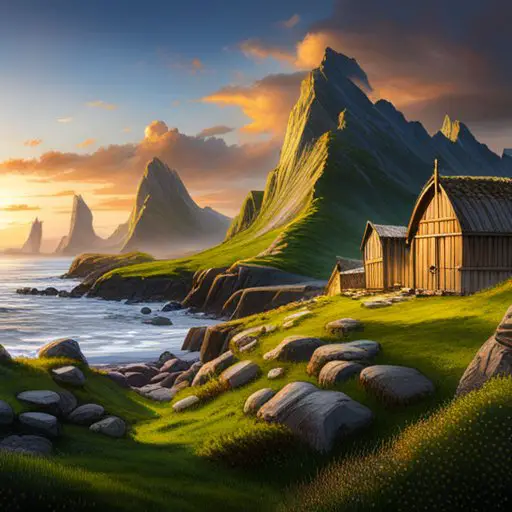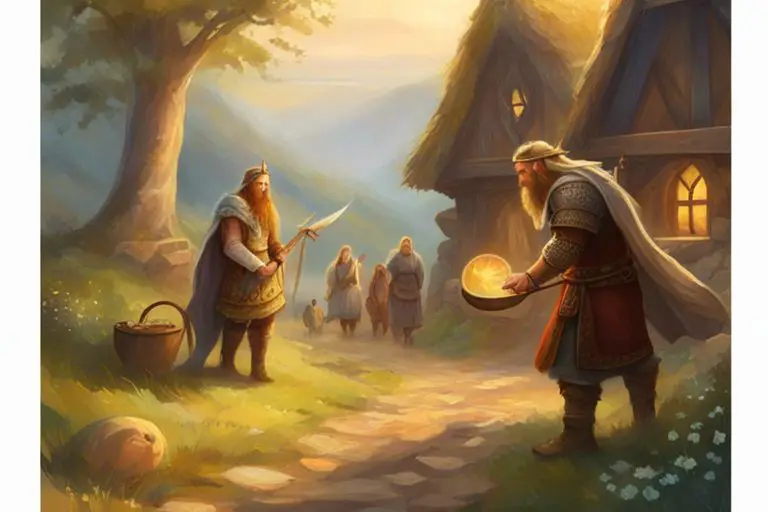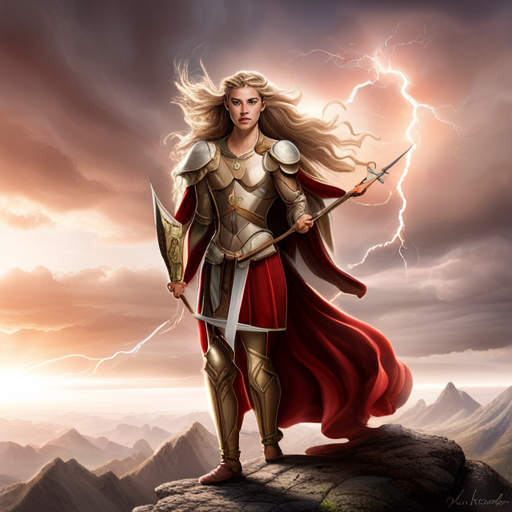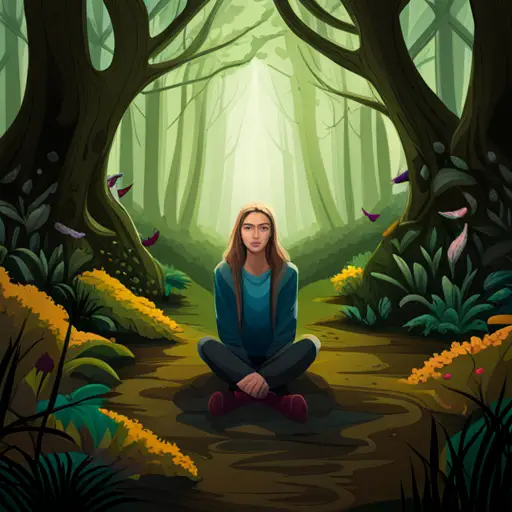As I stand on the rugged coastlines of Britain and Ireland, I cannot help but feel the weight of history that has shaped this land. The Vikings, with their longships and fierce warriors, left an indelible mark on these islands that still resonates today.
From the northern reaches of Scotland to the rolling hills of Ireland, the Norse influence can be seen in the language, architecture, and culture of these lands.
It is a humbling experience to walk in the footsteps of these Viking settlers, to see the remnants of their once-thriving communities, and to imagine the hardships they faced in carving out a new life in these foreign lands.
Yet, despite the challenges they encountered, the Vikings were able to leave their mark on these islands in ways that have endured for centuries.
In this article, we will explore the legacy of the Viking settlements in Britain and Ireland, and how their influence can still be felt today.
The Arrival of the Vikings in Britain and Ireland
You’re about to discover how the fierce warriors of the north sailed their way into your ancestors’ lands and left an indelible mark on their culture.
The Vikings, known for their seafaring skills and military prowess, arrived in Britain and Ireland in the late 8th century. Their arrival was marked by raids and pillages that struck fear into the hearts of the locals. These attacks were so devastating that the Vikings were able to establish their own settlements in these lands.
The Vikings’ arrival in Britain and Ireland was not a peaceful one. They were driven by a desire for wealth and power, and they used their military might to subjugate the local population.
However, their influence on the culture of these lands was significant. The Vikings introduced new technologies, such as shipbuilding and metalworking, and left their mark on the language, place names, and even the DNA of the people they conquered.
Viking Settlements in Scotland and Wales
You’ll discover the historical impact of Scottish and Welsh regions that were inhabited by Scandinavian people during the Middle Ages.
The Vikings, who were known for their seafaring skills, established settlements in Scotland and Wales, leaving their mark on the local culture. These settlements were established as early as the 8th century and continued to exist until the 11th century.
In Scotland, the Vikings established a number of settlements in the Hebrides, Orkney, and Shetland Islands. They also established a settlement in Caithness, which is located on the northern coast of Scotland. These settlements were strategically located and allowed the Vikings to control the sea routes between Norway and the British Isles.
In Wales, the Vikings established a settlement in Anglesey, which is located off the northwest coast of Wales. The settlement was strategically located and allowed the Vikings to control the Irish Sea.
Impact of the Vikings on Language and Architecture
As you delve into the impact the Vikings had on language and architecture, you’ll be fascinated by the similarities and differences between their style and that of the local culture.
The Vikings were known for their intricate woodcarvings, which were often used to decorate their buildings and ships. This style was quite different from that of the local cultures, which tended to favor more simplistic designs. However, over time, the two styles began to merge, and it became difficult to tell where one ended and the other began.
In addition to their unique woodcarving style, the Vikings also had a significant impact on the local language. In many cases, the Vikings settled in areas where the local language was already well-established. As a result, they had to adapt to the local language and incorporate it into their own.
This led to the creation of a number of hybrid languages, which combined elements of both Viking and local speech. Today, many of these languages are still spoken in the areas where the Vikings settled.
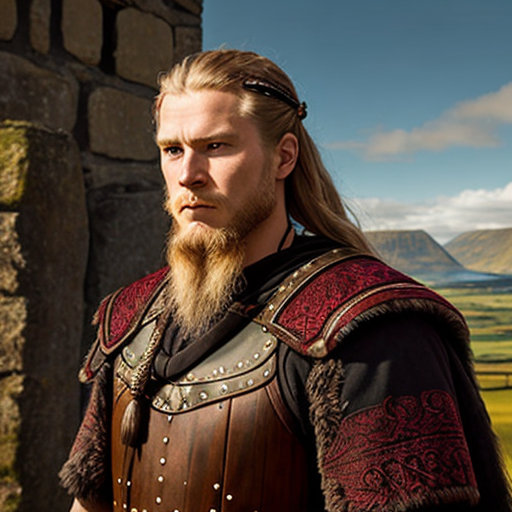
Cultural Legacy of the Vikings in Art and Literature
You may be intrigued to learn about the lasting cultural impact that the Vikings have had on art and literature, as their unique style and storytelling techniques have influenced generations of artists and writers.
Viking art is characterized by intricate designs, often featuring animals and mythological creatures, and was often used to decorate objects such as weapons, jewelry, and ships.
Norse mythology, with its gods and epic tales of adventure and heroism, has also had a profound impact on literature, inspiring works such as J.R.R. Tolkien’s ‘The Lord of the Rings’ and Neil Gaiman’s ‘American Gods.’
The Vikings were also skilled storytellers, passing down their myths and legends through oral tradition. This tradition has been carried on in the form of sagas, which are epic stories written in Old Norse.
These sagas provide a glimpse into Viking culture and society, and are still studied and enjoyed by scholars and enthusiasts today. The Vikings may have been a fierce and feared people, but their art and literature have left a lasting legacy on the world.
Enduring Norse Influence in Modern-Day Britain and Ireland
Discover how the lasting impact of Norse culture can still be experienced in modern-day British and Irish traditions. The Vikings left a lasting mark on the cultures of these regions, and their legacy can be seen in a variety of ways.
Here are just a few examples:
– Place names: Many towns and cities in Britain and Ireland have names of Norse origin. For example, Dublin comes from the Old Norse word ‘dubh linn,’ meaning ‘black pool.’
– Language: The English language has been shaped by the Norse influence, with many words of Viking origin still in use today. Words like ‘berserk,’ ‘freckle,’ and ‘mire’ all have their roots in Old Norse.
– Food: Traditional British and Irish cuisine has been influenced by the Vikings, with dishes like smoked salmon, pickled herring, and black pudding all having Norse origins.
– Architecture: Many of the buildings in Britain and Ireland show signs of Norse influence, particularly in the use of timber and thatched roofs.
– Festivals: The Norse legacy can also be seen in the festivals and traditions celebrated in Britain and Ireland, such as the Up Helly Aa festival in Shetland, which involves the burning of a Viking longship.
The Norse influence may have taken place over a thousand years ago, but it still has a strong presence in modern-day Britain and Ireland. By exploring these cultural connections, we can gain a greater appreciation for the rich and diverse history of these regions.
Frequently Asked Questions
When I think about how the Vikings navigated and traveled to Britain and Ireland, I imagine their sturdy longships slicing through the waves with ease. These skilled seafarers relied on a variety of methods to navigate, including the stars, the sun, and even the flight patterns of birds.
They were also known to use landmarks, such as mountains and islands, to guide their way. But perhaps most impressive was their use of the mysterious ‘sunstone,’ a crystal that allowed them to locate the position of the sun even on cloudy days.
With these tools and techniques, the Vikings were able to conquer the seas and leave their mark on the shores of Britain and Ireland.
What was the relationship between the Vikings and the native populations of Britain and Ireland?
As I delved into the history of the Vikings in Britain and Ireland, one question kept nagging at me: what was their relationship with the native populations?
It’s a complex issue, but from what I’ve learned, it seems that there were both periods of conflict and cooperation. While the Vikings certainly brought their own culture and traditions to these lands, they also adapted to the local ways of life.
Some areas, like the Orkney Islands, even saw intermarriage between Vikings and locals. Of course, there were also instances of violence and conquest, but it’s important to remember that history is rarely black and white.
Overall, I think the Vikings’ impact on Britain and Ireland was significant, but it was also a two-way street. Both cultures left their marks on each other, and that’s what makes this period of history so fascinating to explore.
How did the Vikings adapt to the local climate and environment in their settlements?
As the Vikings settled in Britain and Ireland, they were faced with the challenge of adapting to the local climate and environment.
For me, as a Viking, this meant adjusting to the colder temperatures and unpredictable weather patterns. We had to learn how to build sturdy homes that could withstand harsh winds and heavy rain.
We also had to adjust our agricultural practices to suit the different soil types and growing seasons. However, we were able to use our expertise in sailing and fishing to our advantage, as the surrounding waters provided a bountiful source of food and trade opportunities.
Despite the challenges, we were able to adapt and thrive in our new surroundings, leaving a lasting mark on the culture and history of Britain and Ireland.
What were the most significant Viking trade routes and commodities in Britain and Ireland?
As a history enthusiast, I’ve always been fascinated by the Vikings and their impact on Britain and Ireland.
One of the most intriguing aspects of their presence is their trade routes and commodities. The Vikings were known for their seafaring skills and their ability to travel long distances to trade goods such as furs, wool, and slaves.
They established trading posts in various locations, including Dublin and York, which became thriving centers of commerce. The most significant trade route was the Jutland route, which connected Scandinavia to the British Isles and the rest of Europe. This route was used to transport goods such as timber, iron, and silver.
The Vikings also traded with the Byzantine Empire, bringing back luxury goods such as silks and spices. Overall, their trade networks were essential to their economic prosperity and expansion, leaving a lasting impact on the regions they touched.
What were the religious beliefs and practices of the Vikings in Britain and Ireland?
The Viking’s religious beliefs and practices in Britain and Ireland were fascinating to learn about. They worshipped a pantheon of gods and goddesses, with Odin being the most revered.
They believed that the world was divided into three realms: Asgard, Midgard, and Helheim. Their rituals included sacrifices, feasts, and ceremonies to honor their deities.
They also believed in an afterlife, where warriors who died in battle would go to Valhalla. It was interesting to see how their religion influenced their daily lives and how it was intertwined with their culture and traditions.
Overall, learning about the Viking’s religious beliefs gave me a greater appreciation for their history and legacy.
Conclusion
In conclusion, exploring the Viking settlements in Britain and Ireland has been an enlightening journey.
From the early invasions to the establishment of permanent settlements, the Norse influence is undeniable.
Their impact on language and architecture can still be seen today, and their cultural legacy lives on in art and literature.
As the saying goes, ‘history repeats itself.’
The enduring Norse influence in modern-day Britain and Ireland serves as a reminder of the fascinating and complex history of these lands.
It’s captivating to imagine the Vikings roaming the countryside and leaving their mark on the culture and landscape.
This exploration has truly been a window into the past, and I can’t wait to continue learning about the rich history of these amazing places.

